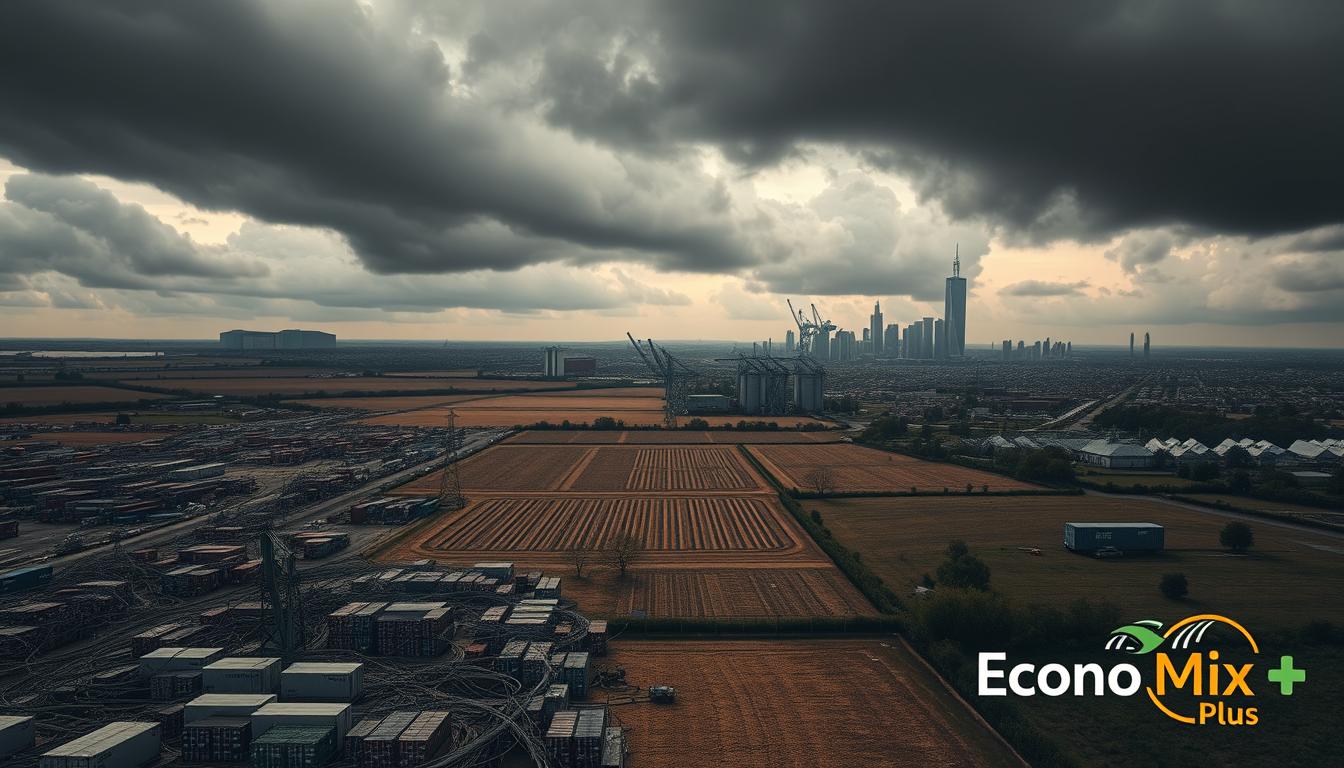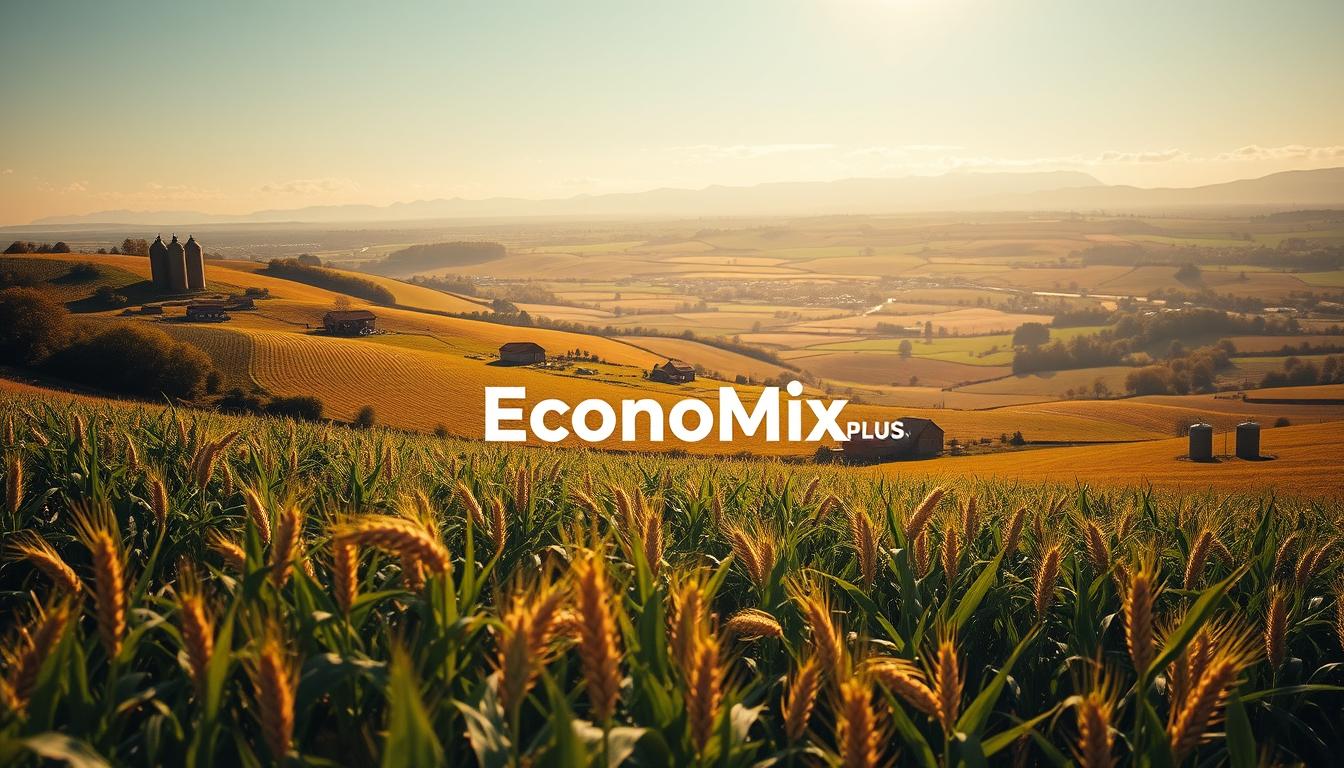What if declining resources and climate pressures didn’t have to weaken a country’s food supply? Recent efforts to strengthen domestic farming systems reveal unexpected possibilities. Over the past decade, strategic reforms transformed agricultural productivity in Britain – even as vegetable output dropped to historic lows.
Current data shows 62% of Britain’s food needs now come from local sources. This milestone reflects coordinated action between policymakers and growers. Support programs helped farmers adopt efficient practices while protecting fertile land. Investments in technology and supply chains kept quality high despite global disruptions.
The results extend beyond dinner plates. Agriculture contributes £120 billion annually to Britain’s economy and supports over 4 million jobs. From dairy cooperatives to seasonal crop innovations, producers reshaped what “homegrown” means in modern markets.
Yet challenges persist. Vegetable self-sufficiency fell from 79% to 53% since 1988 – a warning sign for balanced nutrition. Later sections explore how evolving strategies address these gaps while maintaining progress in core sectors.
Key Takeaways
- Britain currently meets 62% of its food needs through domestic sources
- Targeted government programs accelerated farm modernization
- Producers prioritized high-quality outputs over quantity alone
- Agricultural activities generate £120 billion yearly economic impact
- Fresh vegetable production declined 26% since the late 1980s
Historical Context of UK Agricultural Self-Sufficiency
Tracking food production patterns reveals dramatic shifts over decades. Early records show the nation met just 52% of its needs in 1960. By 1984, that figure jumped to 78% – a postwar high fueled by mechanization and policy reforms.
Evolution of Self-Sufficiency Levels Since Records Began
Critical milestones mark this journey. After hitting 62% in 1970, production surged through the 1980s. However, recent decades saw reversals. Current data indicates a 60-62% self-sufficiency rate – below 1984’s peak.
| Year | Self-Sufficiency Level | Key Driver |
|---|---|---|
| 1960 | 52% | Postwar recovery |
| 1984 | 78% | EU subsidies |
| 2023 | 61% | Tech investments |
Key Trends in Domestic Food Production
Fresh vegetables tell a concerning story. Output plummeted from 79% self-sufficiency in 1988 to 53% today. Farmers shifted toward grains and livestock, which offer better margins.
Crop planning changes explain part of this drop. Wheat and barley now occupy 45% of arable land – up 18% since records began. Climate pressures and labor costs further complicate vegetable cultivation.
These trends create modern challenges. While core staples remain stable, diversified nutrition relies increasingly on imports. Balancing efficiency with dietary needs becomes crucial for future strategies.
How the UK Boosted Agriculture for Self-Sufficiency: Policy and Practice
Strategic partnerships between policymakers and growers reshaped Britain’s agricultural landscape. Recent reforms focus on balancing productivity with environmental stewardship. Multi-year funding guarantees and tech adoption incentives create stability for long-term planning.
Government Initiatives and Agricultural Investment
The Farming Investment Fund allocates £270 million for equipment upgrades and automation. Environmental Land Management schemes reward sustainable practices like soil health monitoring. National Farmers Union president Minette Batters emphasizes: “Statutory targets prevent backsliding on food security while promoting eco-conscious methods.”
Farmers’ Resilience Amidst Climate Challenges
Extreme weather forced operational overhauls. Growers now use satellite-guided irrigation and drought-resistant crop varieties. A 2023 survey shows 68% of producers redesigned fields to handle flooding – up from 42% five years prior.
Innovative Practices in Domestic Food Production
Vertical farming units increased leafy green output by 31% since 2020. Collaborative research hubs connect universities with producers to test AI-driven pest control. These efforts help maintain quality despite rising energy costs.
| Initiative | Impact | Adoption Rate |
|---|---|---|
| Precision agriculture tools | 17% yield increase | 54% farms |
| Renewable energy systems | 23% cost reduction | 41% farms |
| Cooperative buying groups | 12% input savings | 63% farms |
Ongoing policy reviews address labor shortages through robotics grants. This dual focus on innovation and support structures keeps domestic production competitive in volatile markets.
Global and Domestic Challenges Impacting Food Production
Rising temperatures and erratic weather patterns collide with shifting trade dynamics, creating complex hurdles for food systems. These pressures test both growers’ adaptability and supply chain reliability.

Weather Extremes Reshape Farming Outcomes
Record-breaking heatwaves in 2023 reduced tomato yields by 19%, while prolonged rainfall delayed potato planting across eastern regions. Climate shifts now cost producers £140 million annually in lost crops and infrastructure repairs.
- 57% of apple orchards reported smaller fruit sizes due to drought stress
- Wheat quality declined 12% after unseasonal autumn rains
Trade Vulnerabilities Expose Reliance on Imports
Britain imports 84% of fresh tomatoes – a dependency that caused shortages when Spanish exports dropped 23% during 2022’s heat crisis. Similar patterns emerged with lettuce and citrus fruits.
| Product | Import Share | 2023 Shortfall |
|---|---|---|
| Tomatoes | 84% | 15% |
| Lettuce | 67% | 21% |
| Citrus | 92% | 9% |
Public confidence in food security dropped 18% since 2020, prompting new government measures. Emergency grants now help farmers install flood defenses, while trade agreements prioritize climate-resilient suppliers.
“Volatility is the new normal. We’re rebuilding systems to withstand shocks from both weather and markets.”
Conclusion
Building a resilient food system requires balancing innovation with tradition. Britain’s journey shows progress – 62% self-sufficiency achieved through tech adoption and strategic policy frameworks. Yet gaps remain, particularly in fresh vegetables, where production sits at its lowest since 1988. These figures underscore the need for sustained commitment.
Farmers and growers remain central to food security. Investments in automation and climate-resistant crops helped stabilize core sectors. Collaborative efforts, like those outlined in strategic policy frameworks, prioritize both yield and environmental health. Such models demonstrate how adaptive practices counter import dependency.
Future growth hinges on addressing vulnerabilities. While grain outputs stay strong, vegetable imports reached 84% for tomatoes last year. Closing these gaps demands continued research funding and market incentives for diversified crops.
Lessons from Britain’s agricultural evolution offer insights for global partners. Combining data-driven policies with farmer-led solutions creates systems capable of weathering climate and economic shifts – a blueprint for sustaining food security worldwide.













